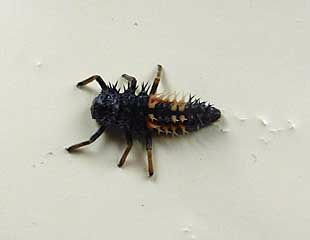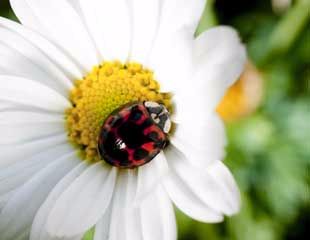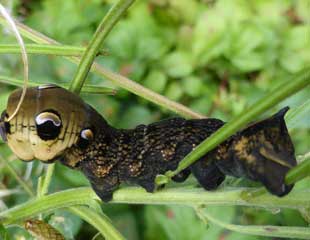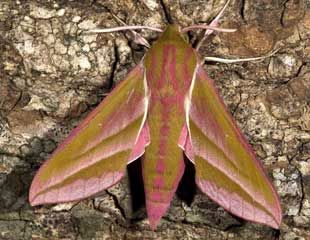Insects are interesting but not all are nice
Posted on
 |
 |
|
The image on the left is a Harlequin ladybird larvae and apparently they like living in our homes, which is probably why I found this in the bedroom. As always, my first instinct is to reach for the camera, and my second is to get rid of it. Had I realised at the time what a nasty destructive ladybird this larvae would turn into I probably should have swotted it. Harlequin ladybirds were imported and are invasive with voracious appetites which include for other ladybirds mainly our native species. The Harlequin was introduced to utilise it's voracious appetite to eat aphids a form of pest control,which it does, but it is more robust than our native ladybirds and it out competes them for food and if other food sources fail, eats them. The Harlequin ladybird has a much wider food range which gives it built in better survival rates, and if there is a lack of aphids Harlequin ladybirds will consume ladybird eggs, larvae and pupae, butterfly and moth eggs, caterpillars and other ladybirds. Harlequin ladybirds have a shorter period of dormancy and so longer to reproduce. They may over winter in your home and can even bite you if there's no other food around. I would not have got that close in for the photograph if I had known it could bite. It is a bit of a Godzilla of the ladybird world. It can be difficult to identify the Harlequin from our native species because they are very variable in colour. Helpfully The Harlequin Ladybird Survey has detailed information to help identify the culprit, but it is not easy, although the larvae is distinctive. Bugs of different sorts are interesting. The image below left is Elephant Hawk Moth Caterpillar which I found in the garden and whilst it may look a little unattractive, quite harmless with a predilection for Rose Bay Willow Herb and the caterpillar will become the very lovely Moth in the right hand image. If you are looking for the caterpillar, from July to September is the time they are hanging around the garden and woodlands, the Moth is around from May to July. It is common but the more the merrier, so I let some Willow bay grow just to keep the caterpillars happy. A few more weeds in my garden won't make any difference. |
|
 |
 |

Add a comment: